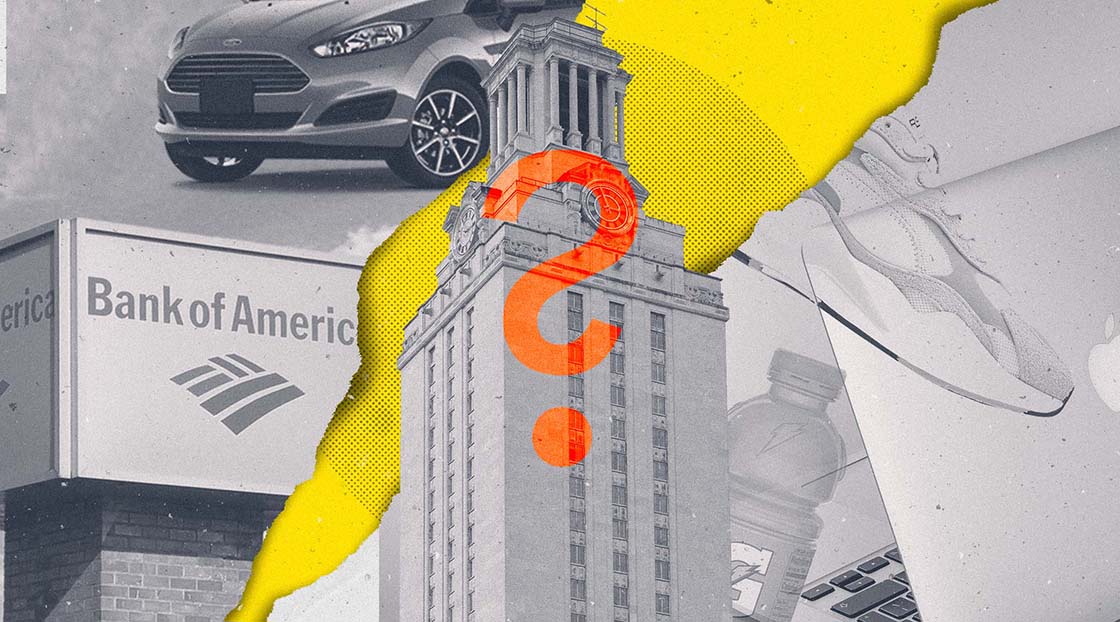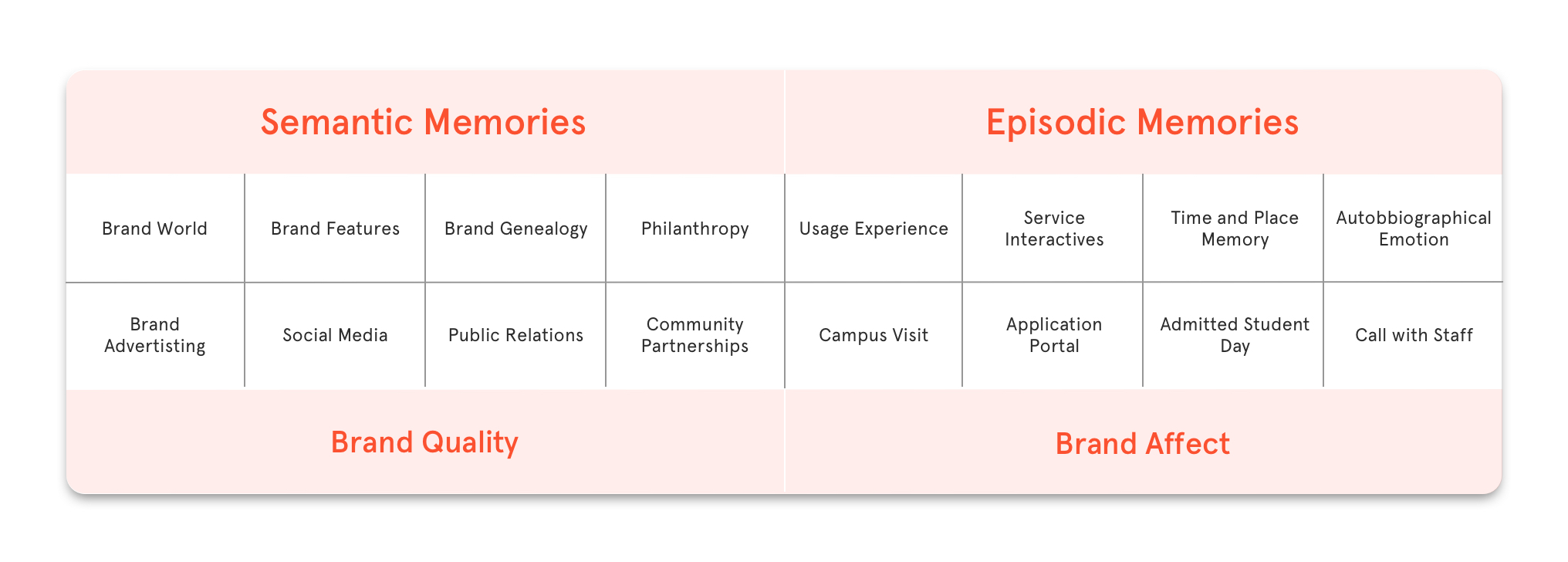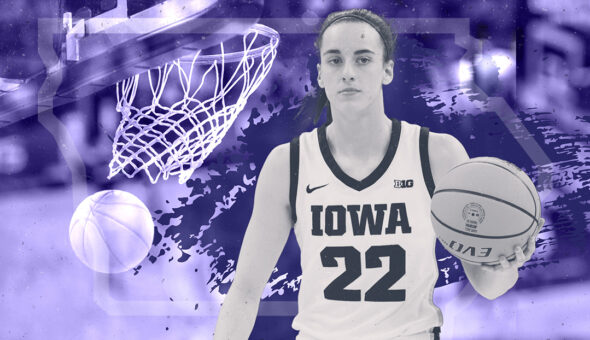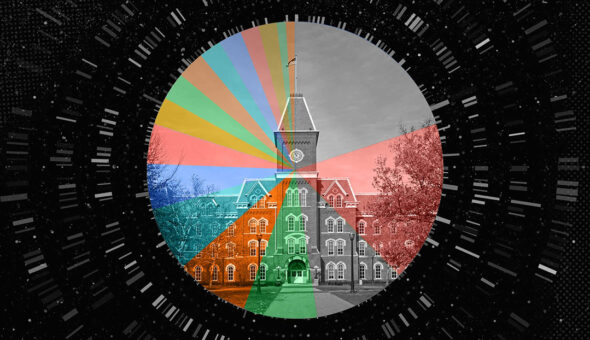What this means is that higher ed brands aren’t simply judged by the product benefit – the usual lens through which college search is viewed. In the case of higher ed, that product is the lasting benefit that the institution’s degree conveys in terms of both knowledge and especially career opportunity. But in many ways, the prospective student journey is defined by the varied and diverse service experiences leading up to any sort of product evaluation – students can’t truly or fully assess the product’s performance until after they’ve graduated. Instead, students spend roughly four to six years in a service experience as they progress as prospective students toward becoming a student, and then the experience they have as enrolled students.
Read more: Why College Presidents Are Now Chief Marketers
So it’s clear that not only does higher education incorporate both service and product frameworks, and that’s why it is critical that brand managers must understand each framework, and that certain aspects of both are required to strengthen the marketing of institutions of higher education.
Defining Product Brands and Service Brands
We will outline how higher ed institutions function both as a hybrid of a product brand and a service brand, but first let’s define what each of those means.
What is a Product Brand?
A product brand is defined by its associations related to a specific product that comprise a function or group of functions, and are judged by elements like quality, packaging, and price. Coca-Cola is an example of a well-known product brand.
How is Higher Education a Product Brand?
As a product brand, an institution’s value is judged by:
- Benefit: The benefit of a degree once completed.
- Price: both real and relative to the expected outcome
- End User: Typically, this is the student. The student is the end user of the product itself, but the student (body) also becomes part of the brand’s identity, as judged by prospective students.
What is a Service Brand?
A service brand is defined by an intangible service offering, deriving its value from the service environment, the service employees, and the overall service experience. BB&T would be an example of a service brand.
How is Higher Education a Service Brand?
As a service brand, an institution’s value is judged by:
- Behavior: At points of service, performance of employees and the service environment and experience becomes the product.
- Response: The perceived response to prospective student inquiries, as well as the perceived experience, by prospective students, of current students; and also, that responsiveness as perceived by the current students themselves.
- Price: The service experience evaluated against the perceived cost.
- End User: Student use of the higher ed service has traditionally had low visibility, but student experiences are communicated through word-of-mouth to, friends, family or community – increasingly and particularly via social media, these days.
So, while it quickly becomes clear that higher education is an amalgamation of both product and service brand frameworks, there’s an argument to be made that higher ed brands are built from the service experiences that are most often at or beyond the farthest reaches of what “centralized” brand managers can control. From the many academic program microsites to on-campus events, these interactions and service experiences are impactful drivers of meaning and differentiation. Brand managers should – at minimum – have an understanding of how these service interactions shape the perception of their institution of higher education and have a stake in anchoring the experience to brand strategy.
Like top-performing service brands, value is added across the spectrum of these “in-the-trenches” moments, or as Chip and Dan Heath argue in “The Power of Moments,” from the “pit” to the “peak.” In their book, the authors offer a compelling metaphor for how brand managers can effectively align their brand strategy across either framework. The “pit” being a way to think about higher ed brands as a service brand and the “peak,” as a way to think about higher ed brands as product brands.
From the Pit: Brand Perceptions Build Brands
Brands are built by creating a network of emotions, knowledge and memories. Together, these elements form one’s sense or meaning of a brand. That web of perception is built around complex interactions as users experience a brand: active involvement, conscious evaluation, actions, and word-of-mouth messaging.
The more connections that are created, the more-interwoven the network becomes, and the more meaning and more affecting personal experiences become. As Herz and Brunk argued:
“An individual’s brand knowledge and prior experiences with a brand largely influences his/her attitudes and behaviors in the marketplace, making brand memories a key driver for brand equity.”
Herz and Brunk’s work is supported by similar studies that show is that memories of events are strong predictors of brand affinity. Memory, itself, has two components: semantic memories and episodic memories. When it comes to brands, consumers hold both types, but episodic memories have more influence over our perceptions.









